By Rex Graham
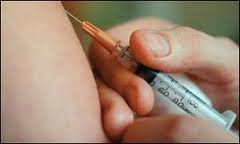
A Yale University study published in the Nov. 15, 2012, issue of Nature described a simple technique to “pull” memory immune cells, a few days after genital herpes vaccination shots, directly into reproductive tissues where the cells are needed. Moving memory immune cells to the site of infections solves a vaccination riddle and two genital herpes vaccine developers are seizing on the breakthrough to improve their vaccines’ effectiveness.
With one of six adults in the U.S. infected with genital herpes and many others fearful of joining them, there is no shortage of volunteers for trials of genital herpes vaccines.
More than 8,300 women volunteered to receive three shots of a HSV-2 vaccine over six months in a clinical trial sponsored by Glaxo. The vaccine was hoped to prevent initial infections. However, Glaxo announced in early 2012 that women who received the vaccine were actually slightly more likely to eventually become infected than women who received a placebo.
$100 million lesson
The Glaxo subunit vaccine, like several others, contained viral glycoprotein D ((gD2)) plus an adjuvant to enhance the antibody response. A 20-year, $100 million effort to prevent genital herpes using gD2 subunit vaccines, seems to have flopped.
Quixotic or smart?
Now, it’s fair to ask why Agenus and Genocea Biosciences are still pursuing subunit vaccines against HSV-2. Are their quests quixotic and doomed as well? And what about live-attenuated, replication-deficient and DNA vaccines against genital herpes?
An estimated one out of six people aged 14 to 49 years old in the U.S. and more than 500 million worldwide have HSV-2 infections, but the virus is incredibly resilient once it infects a human host. The cruel witticism about herpes being more permanent than marriage is sadly true. Anti-viral drugs acyclovir, valaciclovir and famciclovir, marketed under a variety of trade names, can prevent or shorten genital herpes outbreaks, but experts say an effective vaccine as a better solution.
Needed: genital herpes vaccine
Initially, genital herpes causes small, painful blisters in the reproductive and adjacent tissues of men and women. It also infects nearby neurons where the virus sets up latent infections, oscillating between dormancy and outbreaks in genital tissue every few weeks or months.
Genital herpes infections in adults who have competent immune systems are usually not life-threatening. However, genital herpes is associated with a three-fold increased risk for HIV acquisition. And, in pregnant women, genital herpes can lead to miscarriage or premature birth, and the infection can be passed to a child, resulting in a potentially fatal infection.
‘I’m not a whole person’
“At our company’s all-hands meeting I read a letter from a 20-year-old woman, thanking us for working on a vaccine,” said Chip Clark, CEO of Genocea Biosciences, a Massachusetts company testing a protein subunit vaccine against herpes simplex virus type 2 ((HSV-2)). “She wrote, ‘I can’t date. I can’t marry. I can’t have children because of the possibility that I will pass on this terrible disease. I feel like I’m not a whole person.’”
Genocea and Agenus are optimistic they can solve the herpes vaccine riddle and give millions of people hope for a more normal life. Their next-generation vaccines are much more likely than Glaxo’s to succeed.
Why?
The gD2 subunit vaccines were designed primarily to generate an antibody response. However, antibodies alone don’t seem to deter HSV-2. Cell-mediated immune responses that involve thymus-derived cells (T cells) such as CD4 T cells and CD8 T cells, and antigen-presenting cells, macrophages, dendritic cells and related cell types are most effective in animal models of HSV-2 in humans.
Keeping herpes latent
“We are not promising any cures,” said David Knipe, a professor of microbiology and immunology at Harvard Medical School and one of the world’s leading experts on HSV-2 vaccines. “However, an effective therapeutic vaccine may keep the virus in its latent state, or knock out the virus when it reactivates.”
Animals lie
More CD8 T cells or a different kind of CD4 T cell response may work well in animal models, “but they may or may not be good predictors of efficacy in humans,” Knipe said. “We don’t know the correlates of immunity, and to find out we need to do more testing in humans.”
“If I knew why animals lie, my name would be in lights,” said Genocea’s Clark.
Under the urging of Knipe and his colleagues, the National Institute of Allergy and Infectious Diseases ((NIAID)) hosted leaders of the HSV-2 vaccine community in a workshop Oct. 22-23. The meeting included academic researchers, vaccine developers, providers of grant funding and regulators with the U.S. Food and Drug Administration ((FDA)). The workshop participants are expected to release a list of recommendations for future HSV-2 vaccine development.
The FDA is eager to do its part in the development of an effective HSV-2 vaccine, but the regulatory agency won’t define what antibody levels or cell-mediated immune responses are required. FDA licensure of any genital herpes vaccine will be based on clinical results.
Replication-deficient herpes
The attendees of the NIAID workshop focused on approaches that elicit strong cell-mediated immune responses. Attempts to weaken, or attenuate HSV-2 have resulted in live vaccines that are more potent that protein subunit vaccines, and research is proceeding to ensure that such vaccines are safe. Knipe said replication-deficient HSV-2 that can infect cells – but not multiply in them – could offer the advantages of protein subunit vaccines without the safety concerns of live-attenuated strains.
The vaccines developed by Agenus and Genocea produce antibody responses but, more importantly, they also produce robust cell-mediated responses.
The endpoint for Genocea’s double-blind, placebo-controlled, dose-escalation trial is a reduction in the frequency and severity of genital herpes sores. The endpoint for Agenus is a reduction in viral shedding, which would reduce transmission and lower the occurrence of outbreaks in previously infected individuals.
Vaccine trial results in 2013
Both companies will report the results of their Phase 2 and Phase 1/2a clinical trials, respectively, in the third quarter 2013.
The Agenus and Genocea vaccines each contain an adjuvant that enhances cell-mediated immunity. However, the two companies’ vaccines differ dramatically in the most important component: the protein antigens.
Deconstructing two herpes vaccines
Genocea uses two HSV-2 proteins. One is gD2, which was used in Glaxo’s vaccine. The second protein is called infected cell protein 4 ((ICP-4)), which elicits a strong cell-mediated response in patients of varied genetic backgrounds.
Agenus uses 32 peptides, all made synthetically. Agenus scientists selected the peptides, each 35 amino acids in length, because they were exact matches for peptides in a database of peptides that are known to be involved in human “antigen presentation” reactions that are a key part of cell-mediated immunity.
The Agenus vaccine has an additional ingredient: human heat-shock protein 70 ((hsp70)). This protein, which is induced by fever and other stressors, is an important “alarm signal” that triggers innate immune responses that are known to kill or inactivate many viruses.
“We’ve designed what we think is an optimal vaccine with a very wide spectrum of 32 targets that allow us to address a very wide cross section of the population and a wide spectrum of the herpes genome,” Dr. Garo Armen, CEO of Agenus, said in a telephone interview.
Financing Phase 3
Agenus plans to finance Phase 3 trials of its HSV-2 vaccine with income generated from its other products. The company has 18 products in clinical development, many being developed in collaboration with Glaxo. “We will have a number of companies wanting to partner with us,” Armen said.
Privately held Genocea announced in October that it has raised $30 million in Series C financing. The Bill & Melinda Gates Foundation and CVF, LLC, an affiliate of Henry Crown and Co., are participating with Genocea’s existing investors, including Polaris Venture Partners, Lux Capital, SR One, Johnson & Johnson Development Corporation, Skyline Ventures, Cycad Group, Auriga Partners, MP Healthcare Ventures and Morningside. Genocea has raised a total of $76 million in equity financing to date.
‘Push-pull’ breakthrough
The Agenus and Genocea vaccines rev up CD4 T cells, which are involved in cell-mediated immunity, as well as memory CD8 T cells, a particularly important subpopulation of T cells that migrate through the spleen, liver and other organs, but don’t enter vaginal tissue and other parts of the body unless recruited by CD4 T cells.
However, the Yale study published in Nature reported that a biochemical signal in the form of a topical application of chemokines ((CXCL 9 and CXCL 10)) in the vaginas of mice “pulls” memory CD8 T cells into the tissue whether CD4 T cells are there or not.
The pull was so effective that 100 percent of mice that received it after being vaccinated with a genetically weakened strain of HSV-2 survived a lethal challenge of HSV-2. However, only 36.3 percent of mice survived the lethal challenge if they had been given only the vaccination.
Adding the ‘pull’
“If vaccines develop robust memory CD8 T cell responses, that’s great, but you still need to recruit them to the site of infection,” Akiko Iwasaki, professor of immunobiology and molecular, cellular and developmental biology at Yale University, said in a telephone interview. “Hopefully, our ‘pull’ approach can be used with any vaccine to do that.”
The Yale results are so compelling that the CEOs of Genocea and Agenus said in telephone interviews that they are investigating the biochemical “pull” approach with their current vaccines to determine whether to add the new wrinkle in the next round of clinical trials.
“We find ‘push-pull’ very interesting, very promising,” said Genocea’s Clark. “We are built narrowly around our antigen-discovery platform, but we would be narrow-minded if we didn’t think that what we develop is only part of the solution.”
Armen, the CEO of Agenus, was equally impressed. “As long as there is safety data on the pull mechanism, we may want to do a preclinical model and get it into the clinic as early as possible.”
Iwasaki also said the chemokines used in her study are gentle, safe and can be formulated into a gel that can easily be applied topically. She said another FDA-approved gel used to treat genital warts is much more toxic than her chemokines.
DNA genital herpes vaccine
San Diego-based Vical, Inc., dramatically improved protection against HSV-2 in mice with a DNA vaccine that includes the full length of the gD2 gene combined with an adjuvant called Vaxfectin®. In a paper published in the May 22 online edition of Journal of General Virology, researchers said all mice in the gD2 vaccine-only group died when given 500 times the lethal dose of HSV-2. However, 80 percent survived if they had been given Vaxfectin with the DNA vaccine.
Vical plans to begin human trials in 2013 and will evaluate multivalent DNA vaccines that elicit cell-mediated immunity and have prophylactic and therapeutic activity in the guinea pig model of genital HSV-2.
Amgen (AMGN) purchased BioVex Group, Inc., in March 2011, but Amgen hasn’t announced plans to advance BioVex’s genital herpes vaccine, which is rationally designed to remove the genes that allow HSV-2 to avoid the immune system.
Sanofi Pasteur, provider of vaccines against more than 26 infectious diseases, is supporting development of the ACAM-529 replication-defective HSV-2 vaccine. The vaccine protects mice from a lethal vaginal HSV-2 challenge, and it provides better protection than glycoprotein D, plus adjuvant, in guinea pigs.
Article submitted by SanDiegoBiotechnologyConnection.com.
GlaxoSmithKline (GSK) Stock Quote and News:
Disclaimer: Neither www.otcshowcase.com nor its officers, directors, partners, employees or anyone involved in the publication of the website or newsletters (“us” or “we”) is a registered investment adviser or licensed broker-dealer in any jurisdiction whatsoever. Further, we are not qualified to provide any investment advice and we make no recommendation to purchase or sell any securities. The prior article is published as information only for our readers. otcshowcase.com is a third party publisher of news and research. Our site does not make recommendations, but offers information portals to research news, articles, stock lists and recent research. Nothing on our site should be construed as an offer or solicitation to buy or sell products or securities. This site is sometimes compensated by featured companies, news submissions and online advertising. Viper Enterprises, LLC (parent company of OTC Showcase) has received no compensation for this article from and owns no shares of the aforementioned company(ies). Please read and fully understand our entire disclaimer at http://www.otcshowcase.com/about-2/disclaimer.











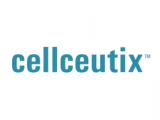
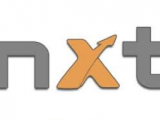
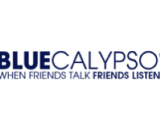

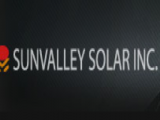



 According to the International Diabetes Federation, more than 500 million people will be diagnosed with diabetes in the next two decades, a more than 50 percent increase from today. Technologies are available presently to help manage the frequency, complications and costs associated with diabetes. Read the
According to the International Diabetes Federation, more than 500 million people will be diagnosed with diabetes in the next two decades, a more than 50 percent increase from today. Technologies are available presently to help manage the frequency, complications and costs associated with diabetes. Read the 





0 comments
Add your comment
Commenting is allowed only for registered users.